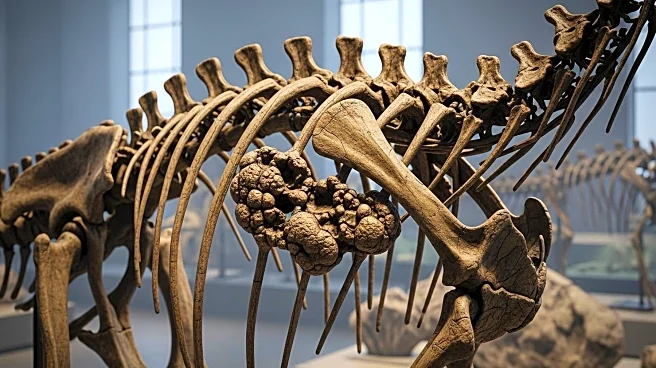What's Happening?
Researchers have discovered evidence of a bone disease, osteomyelitis, in sauropod fossils from the Cretaceous period in Brazil. The fossils, found in Ibirá, São Paulo, show signs of the disease, which is caused by pathogens like bacteria and viruses. The study, supported by FAPESP, indicates that the region's conditions favored the spread of the disease among dinosaurs. The bones show no signs of healing, suggesting the disease was fatal. The lesions, identified using electron microscopes, differ from other bone pathologies, indicating a unique manifestation of osteomyelitis. The study provides insights into the health challenges faced by dinosaurs and the environmental factors that contributed to their demise.
Why It's Important?
This discovery sheds light on the health and environmental conditions of prehistoric times, offering valuable information for paleontological research. Understanding the diseases that affected dinosaurs can help scientists draw parallels with modern species and their vulnerabilities. The findings may influence conservation strategies for current wildlife facing similar environmental challenges. Additionally, the study highlights the importance of fossil records in understanding the evolutionary history and ecological dynamics of ancient species.
What's Next?
Further research may explore the specific pathogens responsible for the disease and their transmission methods. Scientists might investigate other fossil sites for similar evidence, expanding knowledge of dinosaur health and disease. The study could inspire interdisciplinary collaborations between paleontology and modern medicine to explore ancient diseases' relevance to contemporary health issues. Conservationists may use these findings to advocate for preserving environments that prevent disease spread among current species.












